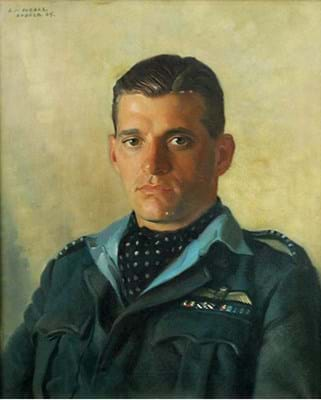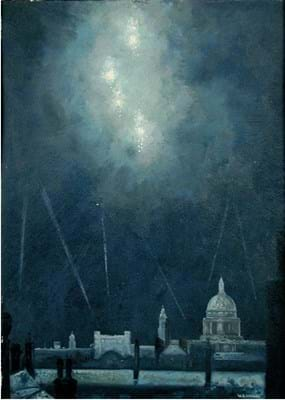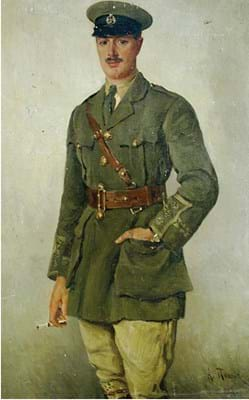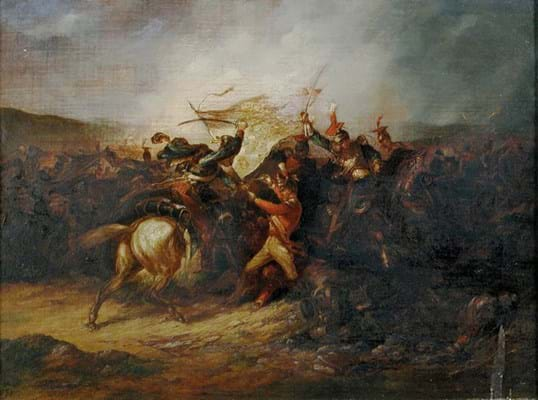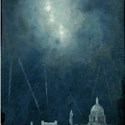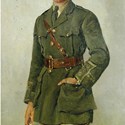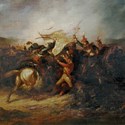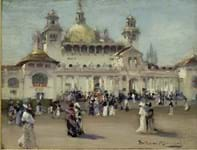Art market
AN arresting portrait of ‘Johnnie’ Johnson, the Second World War fighter ace credited with more enemy ‘kills’ than any other British pilot, led a strong line-up of military pictures at Cheffins (22.5% buyer’s premium).
Painted by Leonard Harry Wells (1903-90), the market-fresh 19 x 23in (49 x 59cm) oil on canvas was consigned to the January 5 sale in Cambridge directly from the pilot’s family.
It was painted in Lubeck at the tail end of the war in 1945, as detailed in the inscription on the canvas.
Though one of only a few paintings by the talented Wells to appear at auction, its value undoubtedly lay in the fame of the sitter. Wing Commander (later Air Vice-Marshal) James Edgar ‘Johnnie’ Johnson was a far cry from the devil-may-care upper-crust playboy that Second World War fighter pilots were deemed to be.
The son of a police inspector from Melton Mowbray, he was educated at Loughborough Grammar School and Nottingham University before qualifying as a civil engineer.
His career as a pilot did not start smoothly. He was rejected twice by the Auxiliary Air Force (mainly on medical grounds). Then, when he qualified into the Royal Air Force Volunteer Reserve, Johnson made an unpromising start in crash-landing two Spitfires within four days.
Finally, when he got his first taste of combat in 1941, he quickly became indispensable, shooting down 34 enemy planes in all, though the overall count is likely to have been more. He was awarded a DSO with two subsequent Bars and a DFC with a later Bar, becoming one of the most highly-decorated pilots of the war.
Air Chief Marshal Sir Christopher Foxley-Norris, a senior commander in the RAF, later said of the pilot: “Johnnie’s kills were hard-earned, but then Johnnie had the two skills needed to be successful: he was a good shot and a good pilot.”
Wells’ stoic portrait of Johnson, sat in his RAF uniform and cravat, presented a rare and possibly unique opportunity to acquire a portrait of the flying ace.
After attracting plenty of pre-sale interest from Second World War militaria collectors and dealers, it sold on the day to one of several bidders in the room at £28,000, more than double the low guide. The price is believed to be a record for the artist at auction.
An unknown soldier
The sale also featured an attractive portrait of an unknown English officer of the First World War nonchalantly smoking a cigarette.
Consigned unframed and in need of restoration from a house clearance in the West Country, the 3ft 7in x 22in (88 x 56cm) oil on canvas board was guided at £500-700 but sold for £1200 to a private buyer.
Adding to its appeal was the artist’s Cyrillic signature, A Monaby 1917. Though the saleroom could not trace the name, its connection to the Russian Army added some intrigue.
“The sitter was probably one of a few English officers serving with the White Russian Army at the time.
This added a bit of mystery to the canvas, and is what collectors are after,” said Sarah Flynn, Cheffins’ picture specialist.
Searchlight over St Pauls, an atmospheric Blitz scene painted in 1942 by wartime fireman Wilfred Stanley Haines (1905-44), was another star in the Cheffins sale.
Discovered on a routine valuation, the signed 2ft 1in x 18in (63 x 46cm) oil on board belongs to a series of bombing raid scenes Haines painted during the Second World War, some of which are now held in the Imperial War Museum and the V&A.
Just two years after this scene was painted, however, Haines died in 1944 during a flying bomb raid in Union Street, Southwark – a stone’s throw from where ATG’s London office stands today.
Against a conservative guide of £100-200, the signed 2ft 1in x 18in (63 x 46cm) oil on board was keenly contested and soared to £5500 where it was hammed down to a private collector.
Paintings depicting earlier military events were led by a romanticised 19th century oil of the saving of the colours at the Battle of Albuhera by amateur military artist Major Thomas S Seccombe (1840-99).
The battle took place in May 1811, and was one of the bloodiest battles of the Peninsular War, fought to prevent Marshal Soult from coming to the aid of the garrison of Badajoz, a frontier fortress-town some 12 miles south that had fallen to the French a few months before.
The 17 x 23in (44 x 59cm) oil on canvas records the actions of Lieutenant Latham of the East Kent Regiment who seized the flag and refused to yield it to the enemy, instead concealing it in his jacket, where it was later found.
The painting had last appeared at a Christie’s London auction in the 1980s where it was acquired by the vendor. It sold to a private buyer in London for £1400, a shade over the £700-1000 guide.


